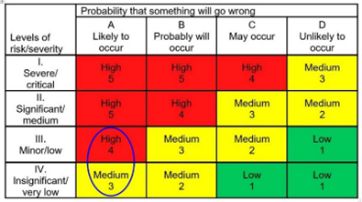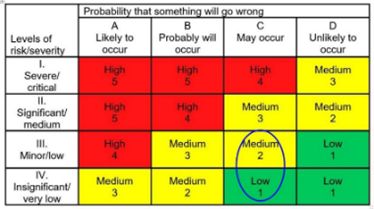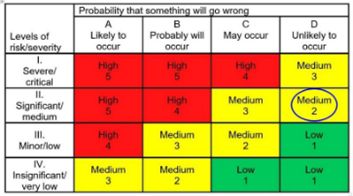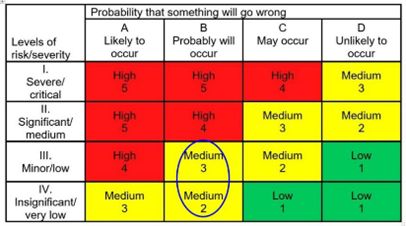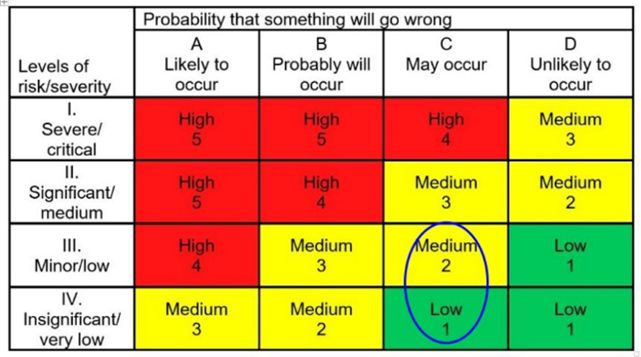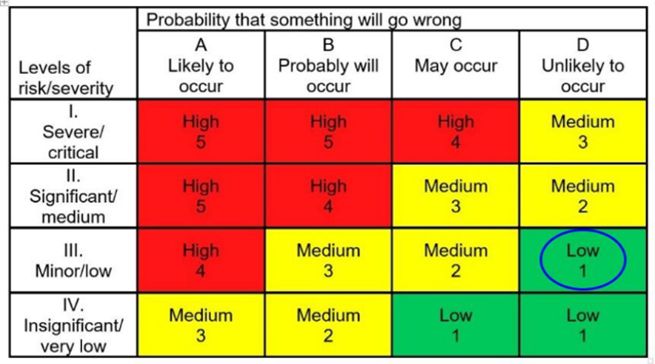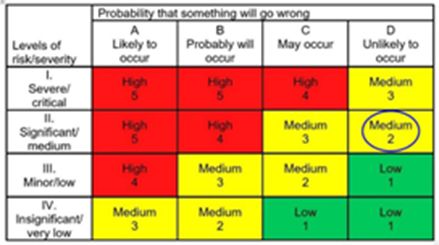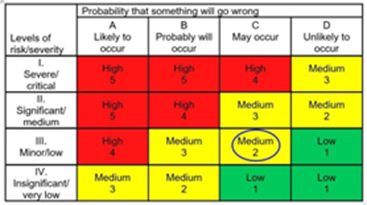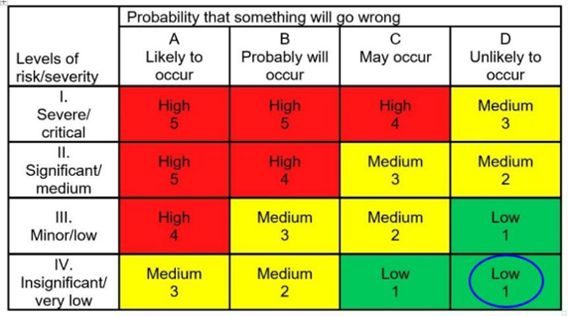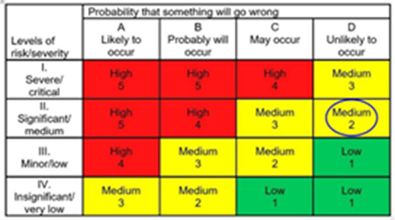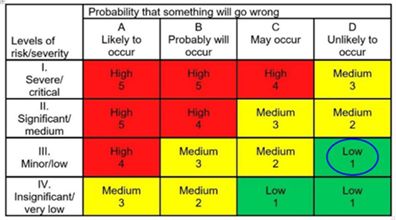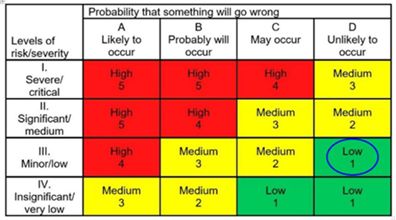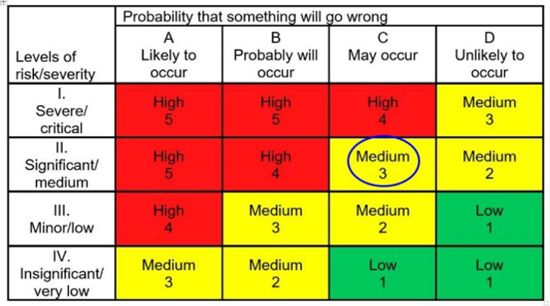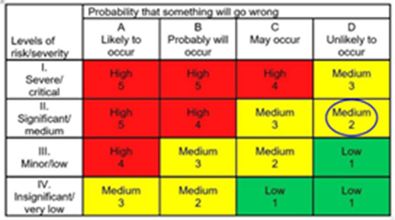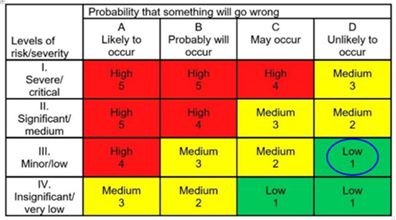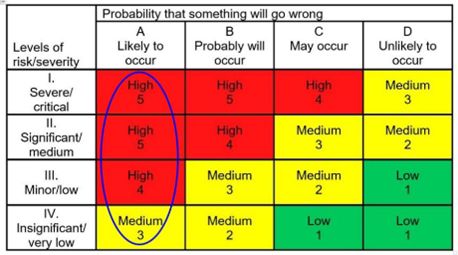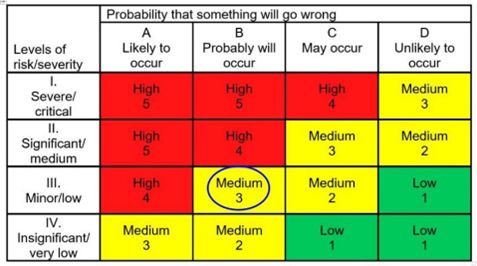This is one publication in the EDIS series Risk Management for 4-H Youth Development Work. This series is intended to equip UF/IFAS Extension county faculty, staff, volunteers, and youth for the important task of providing best practices in risk management strategies.
Our goal is to conduct educational events and activities that coincide with the 4-H mission and mandates while ensuring the safety of participants, sponsors, property, finances, and the goodwill/reputation of the 4-H name. Planning and preparation can mitigate the inherent risk of events and activities. This risk management guide outlines ways to prepare for and deal with the specific risks associated with your program.
Early planning is key to conducting successful events and activities. A helpful tool in this process is the planning guide and matrix from another part in this series, EDIS publication #4FSV90.1, “Pre-Event Planning Guide and Matrix.” As you work through this matrix, you may have questions that are unique to your situation and might not be completely answered by the series. Extension faculty and staff should refer these questions to appropriate personnel. Questions that require time for research punctuate the need for early planning.
When considering potential risks for youth at events that involve horses, start by breaking all of the foreseeable situations into groups according to risk type. This publication will address risks in the following six categories:
- Liability
- Injuries to People
- Injuries to Horses
- Property Damage
- Biosecurity—Human Infectious Diseases
- Biosecurity—Equine Infectious Diseases
Brainstorming the potentialities in each category will give you a "leg up" in being ready for anything.
Introduction
Preparing for risks associated with horse events is similar whether the event is held at a horse show facility/gathering place or at a privately owned facility of a parent, leader, or volunteer. Both situations involve youth gathering at a facility that is not their own and likely bringing their horse. Even farm owners who invite 4-H groups onto their property to interact with their horses should be aware of the potential risks and should have a risk management plan in place.
Creating a risk management plan for horse events does not mean you need to identify every possible risk; that would be impossible. However, it does force you to stop and think about what situations might arise, how to lower the chances of them occurring, and how to react if they do occur. Having a plan demonstrates diligence to provide an event that is as safe as reasonably possible for the youth, public, and horses.
State Equine Liability Law Requirements
First and foremost, Florida Statute §773.04 requires equine activity sponsors or equine professionals to post state Equine Liability Law notices. The sign should state, "WARNING: Under Florida law, an equine activity sponsor or equine professional is not liable for an injury to, or the death of, a participant in equine activities resulting from the inherent risks of equine activities." There is plenty of fine print between the lines of that seemingly simple statement. It would be prudent for any equine event host to read the full statute to understand who and what it covers, as well as its exceptions. The statute also includes details for when and where to post the signs.
Insurance
UF/IFAS Extension holds an excess insurance policy with American Income Life Insurance to provide accident insurance for all 4-H members. Registered participants of 4-H events may also be covered through the American Income Life policy. Please contact your 4-H agent to confirm policy and to see if an additional special events policy through American Income Life is necessary for the planned event.
In addition to accident insurance, most facilities will require liability insurance to be purchased for the event. State facilities will likely be covered under the State of Florida umbrella policy. County and private facilities often require proof of a $1 million liability policy. For more information, refer to Florida 4-H Policies & Best Management Practices and another part from this series, EDIS publication #4H10.5, “Insurance.”
Additional liability insurance can be purchased from the following companies: K&K Insurance, Advantage Equine Agency, and Francis L. Dean & Associates.
Injuries to People
The safety of the participants and spectators is likely the overriding concern for event hosts. People who own, ride, and/or show horses should already be familiar with the dangers involving horses and should know how to work safely around them. However, youth or public spectators who have no experience with horses need more safety instruction and supervision. Regardless of a person's experience level, horses are large animals with minds of their own. Accidents can and will happen. An event coordinator's best approach is to hope for the best but plan for the worst.
Injuries that could happen to people range from extremely minor to very severe, up to and including death. You should plan for the worst scenario and know immediate care plans until an EMT arrives. Event coordinators/staff should know what emergency equipment is available, where it is, and who may use it (fire extinguishers, AEDs, first aid kits, etc.). That said, more likely situations will include bee/wasp/bug stings, heat issues, and minor cuts and punctures. When you factor in injuries that involve the horse, things start to get more severe—kicks, bites, head injuries, broken bones, and so forth. The potential injuries to people are too many to list here or even foresee. Refer to Appendix Table 1 for examples of risks to people and suggestions for avoiding or mitigating them. Please note that volunteers/agents should be familiar with youth health forms before administering any medication, sunscreen, and so forth to a child.
Helmet Use
When considering potential injuries to mounted participants, it is a best management practice to require the use of a helmet. You may check if your event requires helmet use by Florida Statute §773.06. Read the law and the exceptions closely because many 4-H events involving horses fall into one of the exceptions. If state law does not require helmet use, consider the policy for the Florida 4-H Area & State Horse Show Official Rules. This rulebook requires exhibitors to wear helmets at all times when mounted and also when handling the horse on foot in congested areas (warm-up and class make-up areas). Although this rulebook only applies directly to Area and State 4-H Horse Shows, county programs are encouraged to adopt these rules as their county rules. Good practices apply to all levels of the 4-H program.
Injuries to Horse
As an event organizer, your primary concern may be for the safety of the participants. Meanwhile, most participants will be more concerned for the safety of their horses. To prepare for the safety of the horses, meet with the facility manager well before the event and thoroughly inspect the grounds. Watch for things that could cause injury, such as loose boards, exposed nails, uneven footing, roots or stumps in riding areas, and so forth. Give the manager time to rectify issues that can be fixed. Some events (such as jumping and barrel racing) require a specific type of footing in the arena. Confirm that the arenas you have chosen for these events have suitable, safe footing.
Before the event, riders should be familiar with how to ride safely in groups, understand the actions and reactions of horses, and be able to avoid putting themselves in dangerous situations. There are a few things an event coordinator can do to prevent horses from hurting each other. Some of those precautions include limiting warm-up areas to those in specific upcoming classes, controlling how riders and horses gather in close proximity outside of arenas, and empowering staff to point out and stop potentially dangerous situations when observed in passing. Appendix Table 2 lists more examples of risks to horses.
Risk of Property Damage
Easy to overlook is the reverse situation of the horse or participant possibly damaging the facility itself. Minor damage that often happens without intention comes from innocent tasks such as hanging buckets or decorating barn areas. The facility will likely have methods of hanging buckets available that do not require nailing any new hardware to stall walls. Participants should also avoid using adhesives that leave permanent residue when decorating their stall areas (like liquid nails, etc.).
A more impactful risk to the participants involves threats to their personal property and to the facility. Remind them about the potential for theft and advise them to keep their tack and other valuables locked in a tack stall or vehicle. More important is the risk of fire, especially in barns. "No Smoking" signs should be displayed prominently and enforced in all barns. If anyone uses fans, clippers, or other power equipment, they should be unplugged when not in use. Consider limiting the use of these powered devices to avoid overpowering the circuits. More examples of how property can be damaged are in Appendix Table 3.
Biosecurity—Diseases Transmitted to Humans
Animals, including horses, may carry microorganisms that can cause diarrhea and other gastrointestinal symptoms in humans. These microorganisms are shed in an animal's feces and (sometimes) saliva. After shedding, they may also survive in an animal's environment. Organisms of concern include Salmonella, Campylobacter, E. coli, and Cryptosporidium parvum. Participants, staff, and the public should be aware of touching one horse and then another. After touching animals, attendees should avoid hand-to-mouth contact until their hands can be thoroughly washed. If there will be significant attendance by the general public, it is also a good idea to post sanitation reminder signs and even provide hand washing or sanitizer stations (see Appendix Table 4).
Transmission of equine disease directly from horse to human via insects is unlikely. As a general precaution, and for the comfort of both, people should use mosquito repellent on themselves and insecticide spray on their horses.
Biosecurity—Diseases Transmitted Between Horses
Event organizers should check if there are any current outbreaks and gathering restrictions set by the state veterinarian (see the FDACS webpage on equine movement requirements). Horse movement restrictions put in place by the State of Florida will override your planning and likely result in having to cancel the event. Even without any statewide restrictions, all horses traveling should test negative for Equine Infectious Anemia (EIA), as documented on a current Coggins test. Proof of "negative Coggins" within the past 12 months should be collected upon arrival at the event or submitted with the registration. In either case, the physical appearance of the horse should be compared with the description on the Coggins test to ensure a match. Show organizers may choose to contact their local FDACS inspectors to check Coggins upon arrival at the event.
The owner of a boarding stable or pasture, the sponsors of an event, or the person designated in charge of an event is responsible for ensuring that each horse meets the EIA test requirements and for maintaining test report records for a period of two years (see the FDACS webpage on equine infectious anemia). These records must be available for inspection by a Department of Agriculture representative whenever requested and must include the following information:
a. The name of the horse;
b. The name of the horse’s owner or the name of the owner's representative;
c. The EIA test date, which is the date the blood sample was obtained to be submitted; and
d. The laboratory accession number of the EIA test report.
Diseases that are transmitted via direct contact or contact with objects are more of a concern to a facility host than those transmitted by mosquitoes or other vectors. Mosquitoes typically do not transmit diseases from one horse to another (EIA being an exception). They carry it from an intermediate host (such as birds) to horses and sometimes people. Therefore, a horse with a vector-transmitted disease usually does not put other horses at immediate risk. However, if horses are in an area where mosquitoes carried a disease from infected birds to one horse, then there is a possibility for the mosquitoes to carry it to other horses and sometimes to humans. Please note that mosquitoes can transmit EIA from horse to horse, which is why all horses should test negative for carrying EIA before mingling (negative Coggins).
Communicable diseases that are transmitted by direct contact, aerosol, or communal contact with objects are more likely threats. When visually comparing horses to the Coggins test description, organizers should also check for signs of illness (non-clear nasal discharge, fever, lethargy) and, if present, isolate or turn horses away. Buckets should be cleaned and sanitized between uses by different horses, and communal water troughs should be avoided. Stalls should also be completely stripped of bedding and sanitized between groups of horses. Refer to Appendix Table 5 for more thoughts related to communicable diseases.
General Precautions
You will most likely face many risks that do not fit into one of the aforementioned categories. One of the greatest risks involves weather. At most outdoor events in Florida, you can count on either heat and humidity, rain and thunderstorms, or both. Any good risk management plan should have contingencies for the weather. Keep an air-conditioned space available for anyone having issues with the heat. For thunderstorms with nearby lightning, establish a plan defining when to pause and resume activities. Refer to Appendix Table 6 for more details about planning for severe weather.
One of the most unpredictable situations you might encounter is the impulsive reactions of upset participants, parents, trainers, and so forth. The significant majority of youth who participate in horse shows and their “entourage” take the ups and downs of horse shows in stride. However, there might be an unusual situation that causes someone to react emotionally and persistently. In such cases, there should be one “authority” who is tasked with handling the situation. If attempts at calming the upset person fail and the situation causes a disturbance to others, there should be a plan in place for asking that person to leave. General 4-H Code of Conduct procedures, as outlined in Florida 4-H Policies & Best Management Practices, apply in this case and for any other standard operating procedures you have in place for the specific event. Similarly, on the occasion that protesters come to the event, one person should be tasked with handling them as well as any media response.
Summary
Creating a risk management plan for horse events does not mean you need to identify every possible risk. Reviewing the examples in the tables and completing your own risk management plans encourage you to slow down and think about how various situations could arise and how to mitigate the associated risks. When diligently planning educational events and activities, you will find the benefits of youth programming almost always outweigh the risks. Finally, as with all Florida 4-H programs, you should review and adhere to the Florida 4-H Policies & Best Management Practices, which will always supersede any printed materials.
Resources
Advantage Equine Agency Inc., http://www.advantageequine.com/
American Income Life Insurance, Special Risk Division, https://www.ailife.com/about/specialriskdivision
American Income Life Insurance, Submitting 4-H/CES activity report, https://www.ailife.com/specialriskdivision/activityreport
California Department of Food and Agriculture, Biosecurity toolkits: http://www.cdfa.ca.gov/ahfss/animal_health/equine_biosecurity.html
Extension Horses, Safety articles: “Helmet Fitting Guidelines for Horse Owners” (https://horses.extension.org/helmet-fitting-guidelines-for-horse-owners/) and “‘Horse Sense’ Youth Equine Safety Course Now Available” (https://horses.extension.org/horse-sense-youth-equine-farm-safety-course-now-available/)
Florida Administrative Code, Equine infectious anemia statute: https://www.flrules.org/gateway/RuleNo.asp?ID=5C-18.011
Florida Bar Journal, “Back in the Saddle Again: An Analysis of Florida's Equine Immunity Act”: https://www.floridabar.org/the-florida-bar-journal/back-in-the-saddle-again-an-analysis-of-floridas-equine-immunity-act/
Florida Department of Agriculture & Consumer Services (FDACS), Moving horses into and within Florida: https://www.fdacs.gov/Agriculture-Industry/Horses-Equine/Equine-Movement-Requirements
Florida Statute §773, Equine activities, http://leg.state.fl.us/Statutes/index.cfm?App_mode=Display_Statute&URL=0700-0799/0773/0773.html
Francis L. Dean & Associates, Special events, https://new.fdean.com/special-events.aspx
K&K Insurance, https://www.kandkinsurance.com/
UF/IFAS Extension, Department of Animal Sciences, Florida 4-H Area & State 4-H Horse Shows, 2025 Official Rules (PDF), https://animal.ifas.ufl.edu/media/animalifasufledu/horse-extension/2025-FL4HRulebook-Final.pdf
UF/IFAS Extension, EDIS publication #4HFSV373, “Risk Management for Florida 4-H Youth Development Work: Risk Management Checklist,” https://edis.ifas.ufl.edu/publication/4H384
UF/IFAS Extension, EDIS publication #4HFSV90.1, “Risk Management for 4-H Youth Development Work: Pre-Event Planning Guide and Matrix,” https://edis.ifas.ufl.edu/publication/4H299
UF/IFAS Extension, Florida 4-H Participation Form for Youth and Adults, https://florida4h.ifas.ufl.edu/media/florida4hifasufledu/docs/participation-form.pdf
UF/IFAS Extension, Florida 4-H Policies & Best Management Practices, https://florida4h.ifas.ufl.edu/media/florida4hifasufledu/docs/Florida-4-H-Policies-Updated-11.01.23---Copy.pdf
Appendix Tables
The following tables list a variety of potential risks and suggestions on how to prevent or mitigate them. Obviously, not all potential risks are listed because it is impossible to foresee all potential circumstances, especially when animals are involved. The average severity level for each group of risks is shown on a chart from “Pre-Event Planning Guide and Matrix.” The majority of the risks listed could result in injuries anywhere from very minor to severe or death. The chart reflects the level of injury most likely to occur (Figure 1). As a reminder, see the following sections as key to the matrix headers.

Credit:
Levels of Severity
I. May result in death.
II. May cause severe injury, major property damage, significant financial loss, and/or negative publicity for the organization and/or institution.
III. May cause minor injury, illness, property damage, financial loss, and/or negative publicity for the organization and/or institution.
IV. Hazard presents a minimal threat to safety, health, and well-being of participants.
Probability That Something Will Go Wrong
A. Likely to occur immediately or in a short period of time; expected to occur frequently.
B. Probably will occur in time.
C. May occur in time.
D. Unlikely to occur.
Please note that the suggestions given on how to prevent and/or mitigate the risks listed are not official 4-H policy. These are simply best practices you may consider as you tailor your own risk management plans.
Table 1. Injuries to people.
Table 2. Injuries to horse.
Table 3. Risk of property damage.
Table 4. Biosecurity—Diseases Transmitted by Humans.
Table 5. Biosecurity—Diseases Transmitted Between Horses.
Table 6. General precautions.

